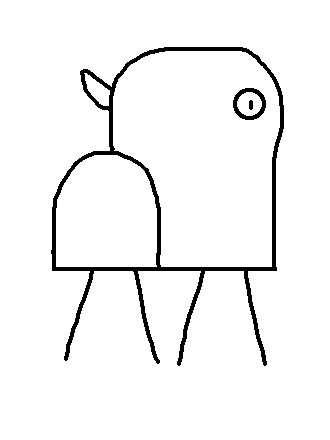96
you are viewing a single comment's thread
view the rest of the comments
view the rest of the comments
this post was submitted on 14 Jan 2024
96 points (100.0% liked)
196
18697 readers
171 users here now
Be sure to follow the rule before you head out.
Rule: You must post before you leave.
Other rules
Behavior rules:
- No bigotry (transphobia, racism, etc…)
- No genocide denial
- No support for authoritarian behaviour (incl. Tankies)
- No namecalling
- Accounts from lemmygrad.ml, threads.net, or hexbear.net are held to higher standards
- Other things seen as cleary bad
Posting rules:
- No AI generated content (DALL-E etc…)
- No advertisements
- No gore / violence
- Mutual aid posts are not allowed
NSFW: NSFW content is permitted but it must be tagged and have content warnings. Anything that doesn't adhere to this will be removed. Content warnings should be added like: [penis], [explicit description of sex]. Non-sexualized breasts of any gender are not considered inappropriate and therefore do not need to be blurred/tagged.
If you have any questions, feel free to contact us on our matrix channel or email.
Other 196's:
founded 2 years ago
MODERATORS

Another nice way one could preserve the complex data when visualizing it would be to make a 3d color mesh and display the imaginary components as the height in z and the real component as the color scale (or vice-versa).
Edit* now I am trying to think if there would be a clever way to show the abs, Re and Im values in one 3d plot, but drawing a blank. Maybe tie Im to the alpha value to make the transparency change as the imaginary component goes up and down? It would just require mapping the set of all numbers from -inf:inf to 0:1, which is doable in a 1-1 transformation iirc since they both have cardinality C. I think it would be
alpha = 1 - 1/(1-e^{Im(z)})
Which looks a lot like the equation for Bose-Einstein statistics in Stat. Mech. I was never very good at complex analysis or group theory though, so I don't really know what to make of that.
Bose-Einstein isn't a great fit, since you'd need to integrate, and it only goes from 0:inf. For mapping the reals to 0:1 you could use arctan and shift it a bit.
Now I'm thinking, instead of color and alpha, you could use two out of hue, saturation and value for Re and Im (or all three, and plot Abs as well)
Ah, you're right, I haven't taken Stat. Mech. in almost 5 years so my brain just latched on to the general form. Analysis in frequency space is always fun